This author recently encountered some serendipity – a business trip to meet new business partners in the Netherlands coincided with the Intersolar Europe 2022 conference happening in nearby Munich. It was only logical to combine the events into a single trip, and to shake as many hands as possible.
Having never been to Northern Europe, but having read that plenty of wind farms and solar panels abound, the hope was to spot solar generation capacity everywhere. The energy revolution turned out to be a bit more subtle than expected.
It’s not all subtle though – as of course, there are the bicycles.
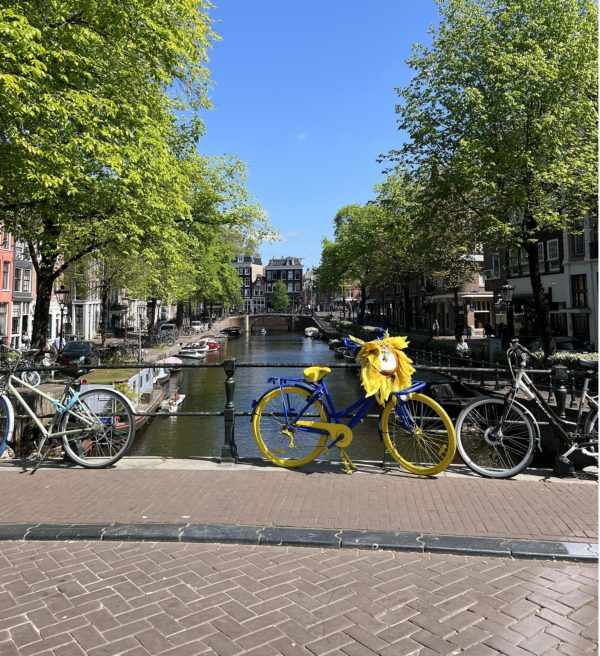
JFW
The first thing you might notice after landing in Amsterdam is that the cars are smaller, and that there is excellent public transport everywhere. There’s little need to get a cab or car from the airport – you can just get on one of several trains and head straight to central Amsterdam. It’s cheap, and clean, too.
Once you leave the highways surrounding the airport area, the famed bicycle culture becomes apparent. Wide red pathways sited in between the roads and pedestrian sidewalks give the cyclists their needed space. And unlike certain American cities, drivers are careful, and slow down for bicyclists and pedestrians.
I’m told the law defines that by default; it is the fault of the car driver if a bike and car collide.
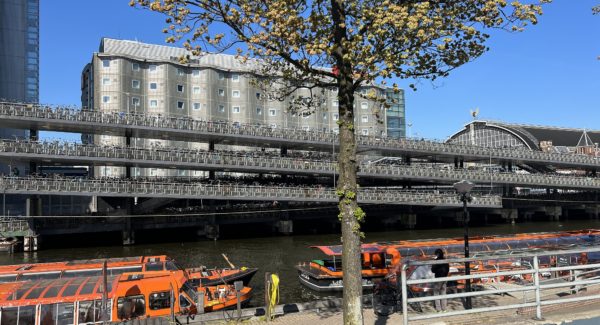
JFW
Moving around downtown Amsterdam is pleasant, quick and easy. Google Maps often suggested that travel times to certain places were fastest via bicycle, while trams were ranked second, and cars the slowest.
There was not much wind or solar visible in this region, though, as the offshore wind farms are located in the northern part of the country. And when walking the streets of Amsterdam, you don’t see many factory roofs or industrial buildings.
On the overnight sleeper train to Intersolar 2022 in Munich, however, a significant amount of solar was easily spotted.
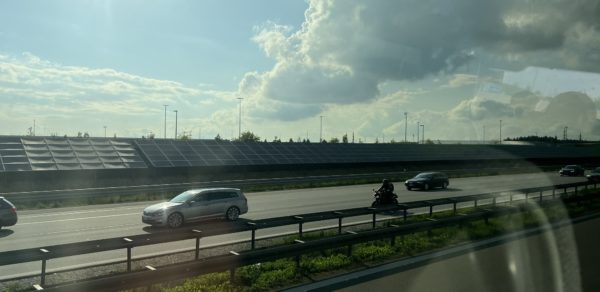
The sleeper train is an eight- to ten-hour ride through the countryside of the Netherlands and Germany. The best part of this leg of the journey was chatting with the three gentlemen I bunked with, including Mr. Iliyan Georgiev of Bulgaria, who was also on his way to Intersolar.
Iliyan and his father had recently started a new solar installation company – Go Big Green. His goal was to introduce his company to manufacturers seeking buyers in the market. One challenge Iliyan has encountered in the nascent Bulgarian solar market is getting bank finance for residential and small business customers.
As you approach the German border, you start to see wind turbines and solar panels. As you enter Germany, you begin to see a lot of solar panels along the highway.
These solar panels typically take the form of the highway barriers above, rooftop systems on local houses and buildings, or ground-mount systems that are located close to the highways and tracks. Most of these systems appear to be smaller than one megawatt, and most were co-located with actual farms. After a few hours, spotting solar farms along the train tracks began to feel somewhat ordinary.
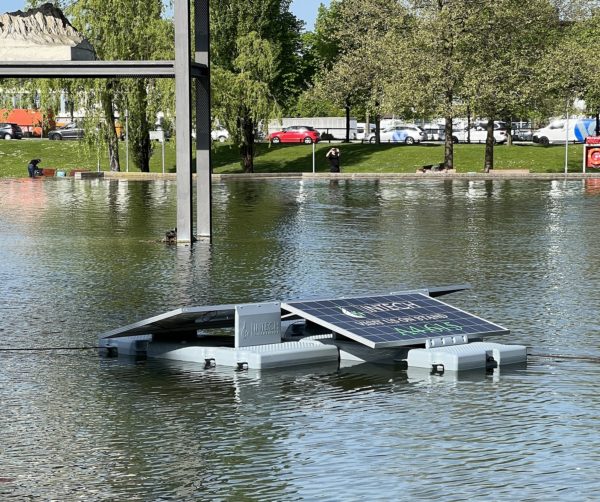
Arriving in Munich at the train station, you turn the corner to catch the underground railway and it takes you straight to the conference hall. Floating in the lake, we see a few solar panels – and we know we’ve arrived at Intersolar Europe 2022.
This content is protected by copyright and may not be reused. If you want to cooperate with us and would like to reuse some of our content, please contact: editors@pv-magazine.com.
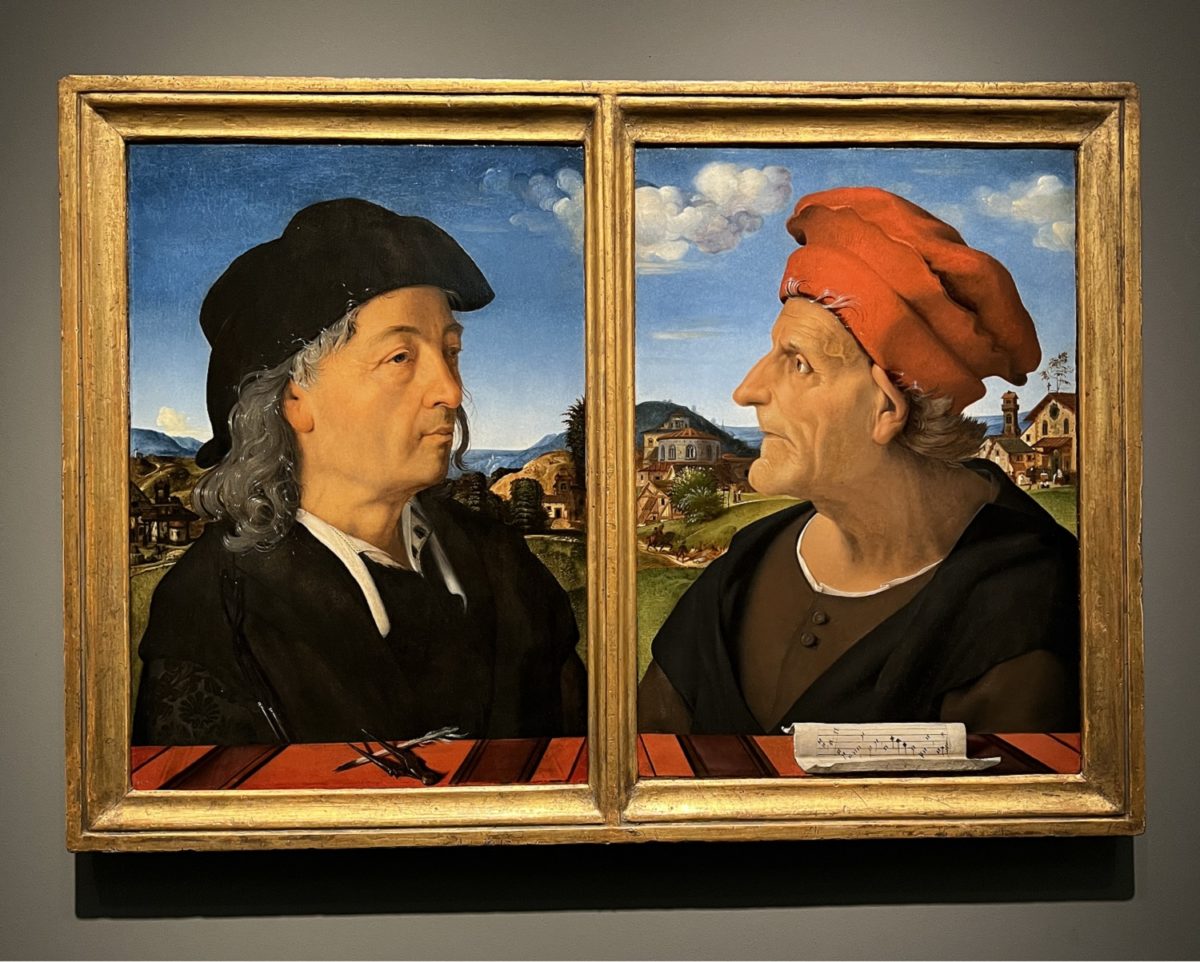







By submitting this form you agree to pv magazine using your data for the purposes of publishing your comment.
Your personal data will only be disclosed or otherwise transmitted to third parties for the purposes of spam filtering or if this is necessary for technical maintenance of the website. Any other transfer to third parties will not take place unless this is justified on the basis of applicable data protection regulations or if pv magazine is legally obliged to do so.
You may revoke this consent at any time with effect for the future, in which case your personal data will be deleted immediately. Otherwise, your data will be deleted if pv magazine has processed your request or the purpose of data storage is fulfilled.
Further information on data privacy can be found in our Data Protection Policy.